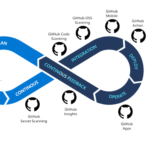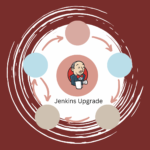In today’s cloud-driven world, organizations are rapidly adopting cloud-native DevOps practices to accelerate software delivery and scale applications efficiently. However, with great power comes great responsibility-especially when it comes to managing cloud costs. Shockingly, 91% of organizations report cloud waste due to inefficient resource use, leading to bloated bills and underutilized infrastructure. For DevOps teams, the challenge is clear: how can you optimize cloud spending without sacrificing performance or agility?
This comprehensive guide dives deep into cost optimization strategies tailored for cloud-native DevOps environments. We’ll explore key concepts, practical tools, real-world examples, and actionable advice to help you cut cloud costs while maintaining robust application performance.
Understanding Cost Optimization in Cloud-Native DevOps
Cost optimization in cloud-native DevOps means continuously monitoring, managing, and adjusting cloud resources to maximize efficiency and minimize waste. Unlike traditional IT, cloud environments are dynamic and scalable, which introduces complexity but also opportunities for automation and fine-grained control.
Key Concepts and Trends
- Cloud Waste: Unused or underutilized resources such as idle compute instances, over-provisioned storage, and orphaned volumes that inflate cloud bills unnecessarily.
- Autoscaling: Automatically adjusting resource allocation based on workload demand to avoid paying for unused capacity.
- CI/CD Integration: Embedding cost monitoring and controls directly into Continuous Integration/Continuous Deployment pipelines to enforce budget-conscious deployments.
- Cloud-Native Tooling: Leveraging cloud provider tools (e.g., AWS Cost Explorer) and container orchestration features (e.g., Kubernetes Horizontal Pod Autoscaler) to optimize resource usage.
- FinOps Movement: The emerging discipline combining finance, operations, and engineering to manage cloud spending collaboratively.
Practical Examples and Case Studies
Consider a leading e-commerce company that integrated AWS Cost Explorer with their Kubernetes autoscaling setup. By automating the scaling of pods based on real-time traffic and embedding cost alerts in their CI/CD pipeline, they reduced their monthly cloud spend by 30% within three months while maintaining 99.9% uptime.
Another example is a SaaS provider that implemented a tagging strategy combined with automated scripts to shut down non-production environments after business hours. This simple policy cut their cloud costs by 20% without impacting developer productivity.
Step-by-Step Guide to Reducing Cloud Costs in DevOps
- Establish Cloud Cost Visibility: Use tools like AWS Cost Explorer, Azure Cost Management, or Google Cloud Billing to get detailed insights into where your money is going.
- Implement Resource Tagging: Tag all cloud resources by team, project, environment, and cost center to enable granular tracking and accountability.
- Integrate Cost Monitoring in CI/CD: Embed cost checks and budget alerts into your deployment pipelines to prevent overspending before changes go live.
- Enable Autoscaling: Configure Kubernetes Horizontal Pod Autoscaler and cluster autoscaling to dynamically adjust resources based on demand.
- Right-Size Resources: Regularly audit your instances, containers, and storage; downsize or switch to cheaper options where possible.
- Automate Idle Resource Cleanup: Use scripts or tools to identify and terminate idle or orphaned resources automatically.
- Leverage Spot and Reserved Instances: Use spot instances for fault-tolerant workloads and reserved instances for steady-state usage to save costs.
- Continuous Optimization: Make cost optimization a continuous process integrated into your DevOps culture with regular reviews and improvements.
Latest Tools and Technologies for Cost Optimization
- AWS Cost Explorer: Provides detailed cost and usage reports with forecasting and anomaly detection.
- Kubernetes Autoscaling: Includes Horizontal Pod Autoscaler, Vertical Pod Autoscaler, and Cluster Autoscaler to scale workloads efficiently.
- Prometheus & Grafana: For monitoring resource metrics and visualizing usage trends.
- Kubecost: A cloud-native tool that provides real-time cost visibility and recommendations for Kubernetes environments.
- Terraform & Pulumi: Infrastructure as Code tools that enable version-controlled, repeatable, and optimized resource provisioning.
Challenges Faced by DevOps Teams and Solutions
Challenge: Lack of cost visibility and fragmented billing data.
Solution: Implement centralized cost monitoring tools and enforce resource tagging policies.
Challenge: Overprovisioning due to unpredictable workloads.
Solution: Use autoscaling and predictive analytics to right-size resources dynamically.
Challenge: Balancing cost reduction with performance and reliability.
Solution: Adopt a culture of continuous testing and monitoring to ensure cost-saving measures do not degrade user experience.
Future Outlook and Emerging Trends
The future of cost optimization in cloud-native DevOps is increasingly automated and intelligent. Expect to see:
- AI-Powered Cost Management: Machine learning models predicting usage patterns and recommending optimizations proactively.
- Serverless and Edge Computing: More granular billing models and event-driven architectures reducing idle resource costs.
- FinOps Integration: Broader adoption of FinOps practices embedding financial accountability into engineering workflows.
- Cross-Cloud Optimization: Tools that optimize workloads across multiple cloud providers to leverage the best pricing and performance.
Cost Optimization Checklist for DevOps Teams
- ☐ Implement detailed resource tagging and enforce it through policy.
- ☐ Set up cost monitoring dashboards using native cloud tools or third-party platforms.
- ☐ Integrate cost alerts and budget gates into CI/CD pipelines.
- ☐ Configure Kubernetes autoscaling (HPA, VPA, Cluster Autoscaler) appropriately.
- ☐ Regularly audit and right-size compute, storage, and network resources.
- ☐ Automate shutdown of non-production environments during off-hours.
- ☐ Use spot instances and reserved instances strategically.
- ☐ Educate teams on cost awareness and incorporate FinOps principles.
- ☐ Continuously review and optimize based on usage trends and new cloud features.
Conclusion
Cost optimization in cloud-native DevOps is not a one-time effort but a continuous journey. By leveraging cloud-native tools like AWS Cost Explorer and Kubernetes autoscaling, integrating cost controls into CI/CD pipelines, and fostering a culture of financial accountability, DevOps teams can significantly reduce cloud waste while maintaining high performance. The combination of practical strategies, automation, and emerging AI-driven tools will empower organizations to get the most value from their cloud investments.
Start applying these expert strategies today to transform your cloud spend from a cost center into a competitive advantage.
Further Reading
- Cloud FinOps: Collaborative, Real-Time Cloud Financial Management by J.R. Storment & Mike Fuller
- Kubernetes Patterns: Reusable Elements for Designing Cloud-Native Applications by Bilgin Ibryam & Roland Huß
- Site Reliability Engineering: How Google Runs Production Systems by Betsy Beyer et al.
- Effective DevOps: Building a Culture of Collaboration, Affinity, and Tooling at Scale by Jennifer Davis & Katherine Daniels



